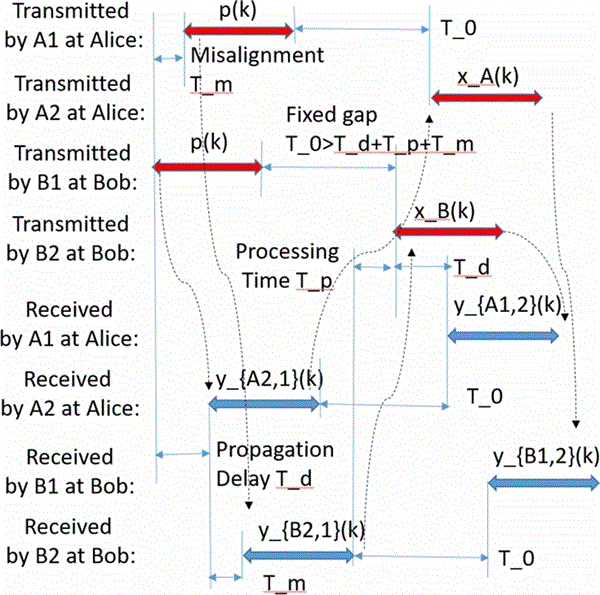Anti-Eavesdropping Using Smart Piloting, Multiple Transmit Antennas And Transmit Beamforming
Patent Status
| Country | Type | Number | Dated | Case |
| United States Of America | Issued Patent | 12,483,377 | 11/25/2025 | 2022-868 |
Full Description
Background
Channel state information in wireless networks is important to adapt optimize the transmitted signal as well as boost its reliability. The addition of physical layer security to cryptography based security is to prevent eavesdroppers from getting their receive channel state information with respect to a source node transmitting secret information. One such scheme, anti-eavesdropping channel estimation (ANECE), exploits a unique property of full-duplex radios by letting two or more cooperative nodes transmit concurrently to each other - specially designed pilots. The requirement of ANECE is keeping the distance between the two nodes relatively small compared to potential eavesdroppers.
Technology
Prof. Yingbo Hua has designed two new schemes of ANECE - ANECE-2 (for full-duplex radios) and ANECE-3 (for half-duplex radios). ANECE-3 could be the first flexible scheme that allows legitimate users to conduct radio frequency (RF) synchronization, necessary channel estimation and the detection of transmitted information while at the same time preventing any eavesdropper at any location from finding its channel state information relative to any transmit antenna where secret information is transmitted.

ANECE-2: A modification of ANECE using antenna-isolation based full-duplex radios. The curved arrows indicate the causality.

ANECE-3: A 3-phase ANECE using half-duplex radios for secure information transmission from Alice to Bob
Advantages
The benefits of the two implementations are:
- In ANECE-2, good alignment between the two pilots (from legitimate users) are not needed - the two pilots could be significantly misaligned.
- ANECE-3 is easy to implement since there is no strict requirement of synchronization between two distributed radios.
- ANECE-3 is the first feasible scheme, when only half-duplex radios are available - that allows secure exchange of information even with an eavesdropper at, virtually, any location.
- ANECE-3 does not require carrier synchronization.
Suggested uses
Important for applications, where secure communication of information is important - such as in:
- Wireless networks
- Telecommunications
- Radio & video broadcasts
Inventor Information
- Please visit Prof. Hua's lab group website to learn more about their research
- Please review all inventions by Prof. Hua and his team at UCR.
- Please read recent press coverage of Prof. Hua.
Related Materials
Contact
- Venkata S. Krishnamurty
- venkata.krishnamurty@ucr.edu
- tel: View Phone Number.
Other Information
Keywords
wireless network, cyber-physical security, cybersecurity, network security, anti-eavesdropping, duplex radio, full-duplex, half-duplex
